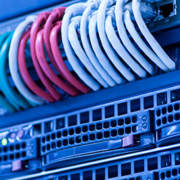How to reassess and improve your current business continuity framework
A business continuity plan is a stand-by strategy for responding to unexpected emergencies and disasters. The modern business environment is highly volatile. Many organizations face impending threats such as cyber-attacks, data breaches, natural disasters, human error, accidents, and social and political turmoil.
A sound business continuity plan is a way to prepare for uncertainties by redirecting resource allocations and business decisions during serious disruptions in enterprise operations. Allianz Risk Barometer 2020 ranks business interruption as the second most devastating threat to businesses after cyber incidences.
Your BCP should include robust strategies for backup and disaster recovery, cash flow management, HR mobilization and engagement, and fallback measures for supply lines, production, and market upheavals. On top of that, a proactive continuity framework needs to be frequently reassessed and updated to guarantee business agility and resilience, especially amid changing business landscape.
Why you need to update your continuity plan
A BCP is typically triggered by an internal or external emergency. For instance, a data breach can evoke a data backup and disaster recovery response. However, in most cases, continuity measures only offer temporary solutions to short-term problems; they act as quick fixes to keep critical operations running until the situation returns to normal.
Unfortunately, that is not always the case. Take, for instance, the COVID-19 crisis that has so far lasted for several months and could continue indefinitely. Hundreds of thousands of businesses are already completely closed in the US alone, and thousands more face a similar fate. Such circumstances call for a serious reevaluation of the BCP, in order to get through the difficult times and future-proof the business against the same kind of threat.
In short, a flexible continuity framework enables your organization to maneuver its way around an evolving crisis by adjusting its response to every unique hurdle.
How to reassess and update your continuity framework
The process of upgrading an existing continuity plan is similar to the process used in the plan’s creation:
- Identify key business areas, critical functions, and the plan’s scope
- Determine dependencies for critical operations
- Assess the risks
- Define the acceptable timescale for recovery
- Draft proactive measure, protocols, and procedures to maintain operations
Narrow down on specifics
Plan and scale your response efforts depending on the circumstances. For example, if you learn that employees can no longer commute to work, arrange for remote working; if data loss is an imminent peril, designing a backup and disaster recovery system would be an appropriate addition to your continuity framework.
Focus on long term continuity
If the current pandemic has taught entrepreneurs anything, is that continuity planning should be far-sighted. Uncertainties and lengthy crises put a lot of pressure on short-term continuity solutions, which is why so many organizations have shut down due to COVID-19.
Come up with sustainable business plans to see your enterprise through every possible disaster. If your disaster response strategies expire before the crisis is averted, you will likely have to change course, putting an extra toll on an already struggling business. Make plans that do not necessarily hinge on a return to business as usual – avoid the mentality of expecting better times ahead and work with what is available.
It takes a keen analytical mind, energy, and time to prepare and constantly update a practical continuity framework. But given that 40 percent of SEMs never reopen after a severe disaster, it is well worth every effort and investment to ensure that your business survives all foreseeable adversities. Do not let your organization become part of these statistics, team up with an IT specialist to fine-tune your disaster preparedness by reinforcing cybersecurity and developing a dependable backup and disaster recovery framework.























